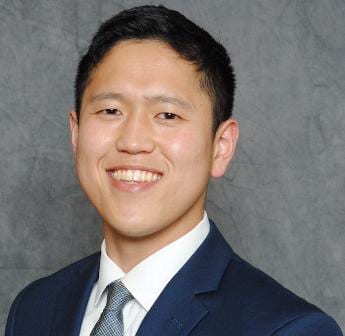
5 Things High School Students Should Know Long Before Medical School
Are you a high school student who wants to become a doctor? Here are five behaviors to adapt now to make you a highly effective pre-med and the med student later.
While medical school may seem like a long way off, there is a reason your parents tell you ‘time flies.’ Before you know it, you’ll be applying to the medical schools of your choice, picking your specialty, and using your trusty stethoscope to identify anything from heart issues to bowel problems. All while trying to maintain some regular schedule for sleep and socializing.
Even though you’re only in high school now, becoming a physician takes big planning! Expect everything from courses, shadowing, volunteering, and hours of studying.
Did you know there are some important small changes you can also make now that will help you on your journey to becoming a physician? These recommendations will make your years in medical school more efficient and just slightly easier. Once you reach medical school, these tips will become so natural to you that they will require little to no effort.
1. Learn What Active Studying Means Now and Practice
You may have heard of active vs. passive listening. Yet in college, you’ll need to kick it up a notch. Active learning improves overall knowledge retention and application skills – think applying concepts to problem-solving, not college applications here. It can also save you time in the note taking and studying process so you’re never focusing on nonessential information.
The first step to mastering active learning is to get comfortable with identifying what’s important. This means that when you’re reading a textbook or listening to a lecture, you’re actively trying to figure out what is important and emphasizing that information in your notes above all else.
The next step is to organize content in a way that you understand so that everything will make sense to you later. This is going to be an active process and may seem to take more time, but learning how to do this now will save you time in the future.
For example, one thing that I did to organize information was to create charts. If I was comparing different types of cells, I would find additional information and include other aspects to compare to complete the chart. Essentially, I had to understand the qualities of each thing I was comparing to make the chart, and I needed to do additional research to fill the chart in.
This process was a much more active and involved way to digest my notes rather than just copying and re-reading them later.
The next step in active learning is to memorize your identified important material in a more dynamic way than you’re used to.
Perhaps you’ve heard of mnemonics – any learning technique that aids information retention or retrieval in the human memory. They’re popular amongst medical students because they work. Make a song, draw a picture of something that can help you trigger your memory later. One medical student even made dances that went along with her study material and posted them on YouTube.
Finally, it’s time to apply and review the information. This can be done in a variety of ways. Ask teachers for practice exams, or exams from last year that you can take. You may also find quizzes online through peer-created platforms. While these quizzes may not be the real deal yet, they can serve as a great tool to help you identify areas you may need to focus on before the real test. If you’re feeling extra confident you can also look for opportunities to explain concepts you’ve learned to your peers online, through message boards and forums.
2. Figure Out Where You Like to Learn
Yes, you must go to class (virtual or not) and sit through lectures to get the core information you need. But once you’re done, you should have a place where you feel comfortable studying and going through the material. This is something you should identify now, even though the location may change depending on the medical school you go to. You can always find a similar, comfortable dupe in whichever city you move to. While some people like coffee shops or libraries – I preferred my own home. I organized my room and desk the way I wanted it and made it optimal for my study habits.
I just found it more convenient to be at home when I studied since I had to get other chores done around the house. Others find that if they remove themselves from the distractions of home, they can focus even more. Some students even think that the indiscernible chatter or clicking cups in a coffee shop can be a soothing studying environment. I beg to differ, but many seem to like this environment which is why background noise apps have millions of downloads, especially since COVID-19 kept us all at home.
Also, determine if you like to study alone, or if you’re more efficient with a group of people. These are all things you’ll need to work on figuring out now, so you can be better prepared in the future to study effectively.
3. Look for Supplementary Content to What You Were Taught in Class
Generally, to learn and understand concepts taught in class, you’ll want to do supplementary early research. This gives you alternate perspectives and points that may not have been apparent at the time and can help you better process and recall information later.
Think of this as adding another dimension to your in-class learning, going from 2D to 3D.
To practice this, look for other resources, like YouTube videos or journals on similar content taught in class. Then, get your computer out, get a notepad up, and summarize what you’re reading in your own words. Look for similarities and differences between how your professor taught it, what you’re reading now, and how you’re summarizing it. This way you are not only actively learning, but you’re finding knowledge gaps that you may have to fill by going over your initial notes or even through asking your teacher additional questions.
Either way, by doing this, you’re identifying the important information and organizing it in a way that you understand and you’ll recall that information much better come test time.
4. Learn to Listen Faster and Better
Oftentimes, colleges will post lectures on YouTube. If you’re in AP classes in high school, the content may be quite similar and beneficial to watch. You can also take courses online with video content to help you with this method, but what I liked to do was to increase the video speed of what I was watching from 1.5x or 2x its normal speed.
That benefits you in two ways: First, the lecture is no longer 60 minutes, now it’s only 30. Second, this method can help you focus. For me at least, the lecturer could speak too slow sometimes and this would result in my mind wandering, so by increasing the speed, I was forced to pay attention. Figure out what works best for you. This method will also come in handy once you’re in college as a premed or even in medical school as lectures don’t stop so you can catch up.
I’ve seen a lot of people record lectures to re-watch or listen to them again later. I don’t believe this is an effective way to learn as it’s a passive activity. Once you have the steps down, you can better use your time reviewing the information through active learning.
5. Don’t Use All Your Free Time to Study
As a premed or medical student preparing to be doctor, you’re not going to have a lot of free time outside of school. But fear not, as it’s not as bad as you may believe. You will have some time off, and you will need to use this time to recharge to succeed in class. The key here is to find ways to successfully balance your extracurricular activities with your studies. The first way to do this is to allow yourself time for play.
Playing when you should be working or studying makes you less efficient and effective. But if you don’t allow yourself any free time to watch your favorite Netflix show, or play a round of League of Legends, you may end up resenting schoolwork or even your career path.
Playing when you should be playing makes you happier, more satisfied, and well rested. One of the best ways to separate the two is by scheduling time to study and scheduling time to play. Schedule a dinner in between study blocks. Study two or three hours during the day and go to a concert at nighttime. If you have play to look forward to, working becomes a lot easier to do and much more rewarding.
Improve Your Likelihood of Getting Into Medical School Today
If you know that becoming a doctor is your career path, you can start planning today. College and physician advisors at MedSchoolCoach work with high school students to help them strategize to assure they are best prepared to apply and get accepted into an direct medical BS/MD or pre-med college program so that they can succeed as a premed and beyond.
Personally, I’ve helped hundreds of students receive personalized attention to optimize their college applications, extracurricular activities, and resume and boost their competitiveness. If you think you may need help on becoming a premed student, feel free to reach out to me!
About the Author, Dr. Edward Chang

Dr. Chang is the co-founder of Prospective Doctor and is an admissions advisor at MedSchoolCoach. He graduated from the David Geffen School of Medicine at UCLA and is a urology resident at the University of Washington. He also attended UCLA as an undergraduate, graduating with a major in Molecular, Cell, and Developmental Biology.









